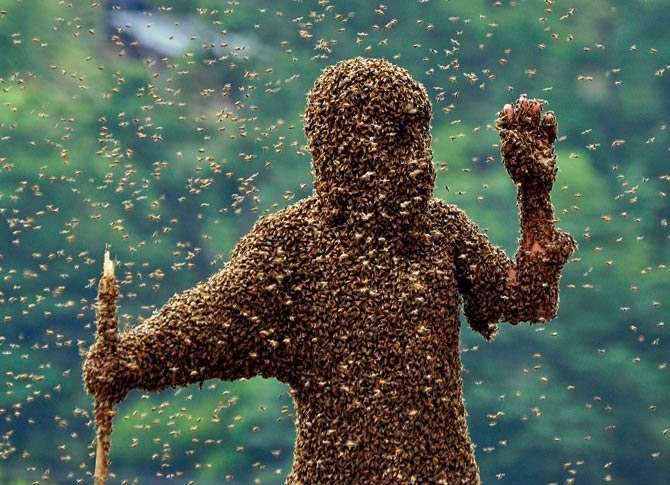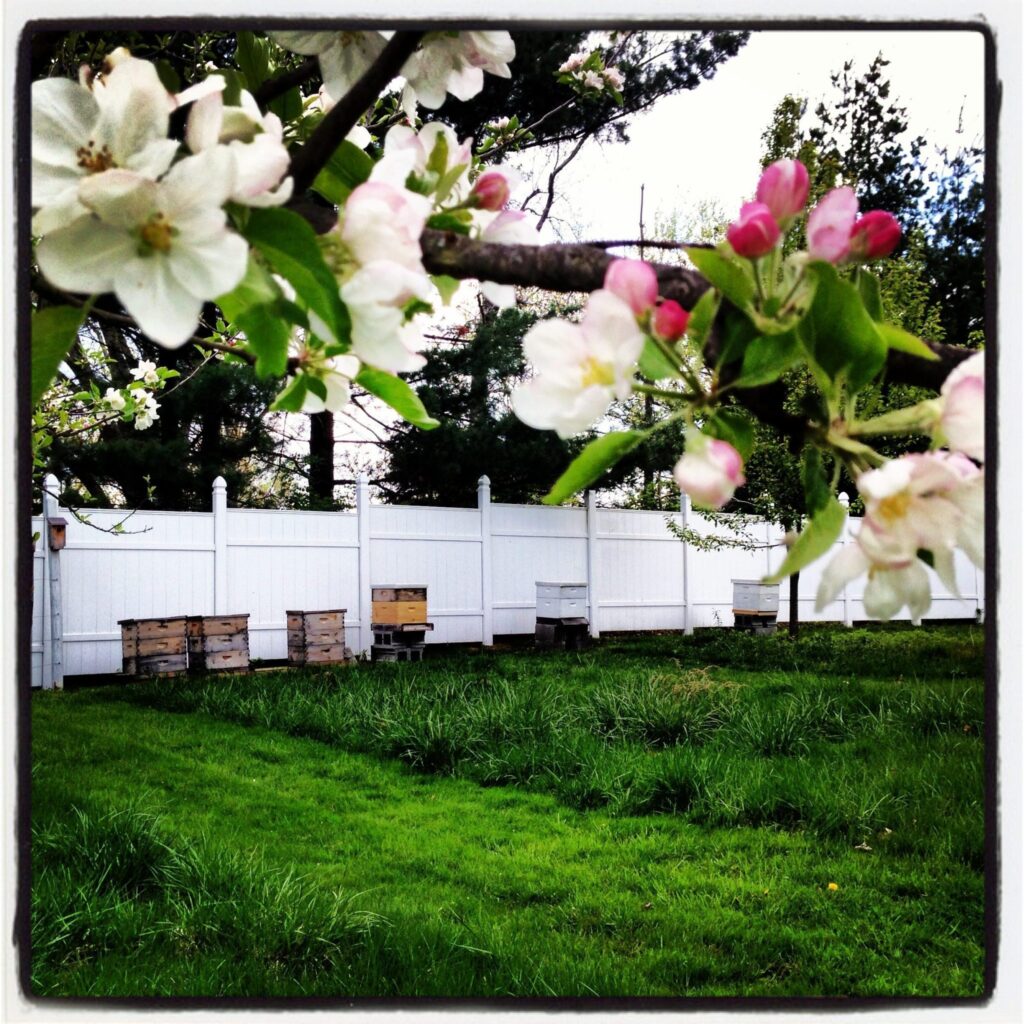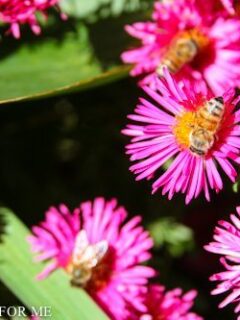On the heels of my post yesterday on why all The Bees Are Dying, I thought I would show you guys how to set up a beehive. It can be a very scary idea setting up and caring for bees so I thought I would do a quick YouTube Tutorial. Let me know if it was helpful or if I can answer any questions. I really want to encourage anyone and everyone who is even remotely interested in keeping bees to give it a try. If you are interested in keeping bees but are scared to death, don’t be! If I can do it, you can do it. If you would like bees to be part of your garden, but don’t want to take care of them, contact your local bee association and see if they have a local beekeeper who might be interested in keeping some hives on your property. You don’t need a lot of space. Bees will travel up to 3 miles away to collect pollen and nectar, so don’t think you alone will have to feed your bees. Read my post on Why I Keep Bees to find out about how bees can impact your garden if you need anymore encouragement to give beekeeping a try.
Liz, who helps me with my bees, keeps hives all over Cincinnati and Northern Kentucky. It works extremely well for me, because she just gives me a heads up when she plans on stopping over and I suit up and mirror what she is doing with her hives with my own. For me having her here makes the whole process of beekeeping much more enjoyable. Liz is kind, calm and intelligent when it comes to beekeeping, where as I am usually in a bit of a rush, so she makes me slow down take a deep breath and enjoy the time with the bees. Most beekeepers are very generous with their time and really want to foster new beekeepers so if you make some inquiries I am sure you will be impressed with the number of beekeepers that will be willing to help you.
If you plan on keeping your own bees you will need to make an initial investment. You will need a suit, gloves, a smoker, hive tool, deep hive box, screened bottom board, medium boxes, frames, inner lid and top. You will also need to come up with something for your hive to sit on. I use 4 cinder blocks stacked on top of one another. Walter T. Kelley Company, which is one of the larger suppliers of all things bees, has a starter kit that starts out at $172.00. Again, if you contact your local beekeeping association they might be able to set you up with some used hive boxes, which may be better because you will already have foundation (comb) that is built-in the frames for your future hive.
One thing that I strongly recommend is a bee suit, gloves and a hood. Now, I have been called a wimp by another beekeeper (not Liz) for wearing my get-up, but the last time I was stung I had a pretty bad reaction and maybe, yes I am a wimp, but I just feel more comfortable and relaxed. Since one of my favorite beekeepers is August Boatwright I am sticking to her opinions on beekeeping
“After you get stung, you can’t get unstung no matter how much you whine about it.” ― Sue Monk Kidd, The Secret Life of Bees
“I hadn’t been out to the hives before, so to start off she gave me a lesson in what she called ‘bee yard etiquette’. She reminded me that the world was really one bee yard, and the same rules work fine in both places. Don’t be afraid, as no life-loving bee wants to sting you. Still, don’t be an idiot; wear long sleeves and pants. Don’t swat. Don’t even think about swatting. If you feel angry, whistle. Anger agitates while whistling melts a bee’s temper. Act like you know what you’re doing, even if you don’t. Above all, send the bees love. Every little thing wants to be loved.” ― Sue Monk Kidd, The Secret Life of Bees
You will also need to call your beekeeping association to get a package of bees to install. Swarms will be occurring throughout the season and that may be a way for you to get bees if you cannot order them this late in the season. If you are here in Cincinnati you can contact Southwestern Ohio Beekeeping Association for help on classes, finding supplies and who may be willing to set up hives on your property. You can check out Liz’s blog TwoHoney’s Bee Co. to learn what she is doing with her bees and a few of her favorite poems. Another great Bee blog is from my friend Emma who is a beekeeper and aromatherapist and her blog is called Miss Apis Mellifera and she is based out of Northolt Village, London. Its nice to hear what beekeepers on the other side of the pond are doing.










Excellent folow up article. Here in Fl. we have several different varieties of bee’s (other than the domestic Honey Bee) that are native to Fl and vital to the many different species of Fl. Native plants. To build hives for native bees I use seven 1/2″ dia.X 2’L bamboo stakes(tied in a bundle), and 3/4″Dia. X 3’L Bamboo stakes (legs in a tripod). It’s a big hit with people who are hip to Fl. Native Gardening.